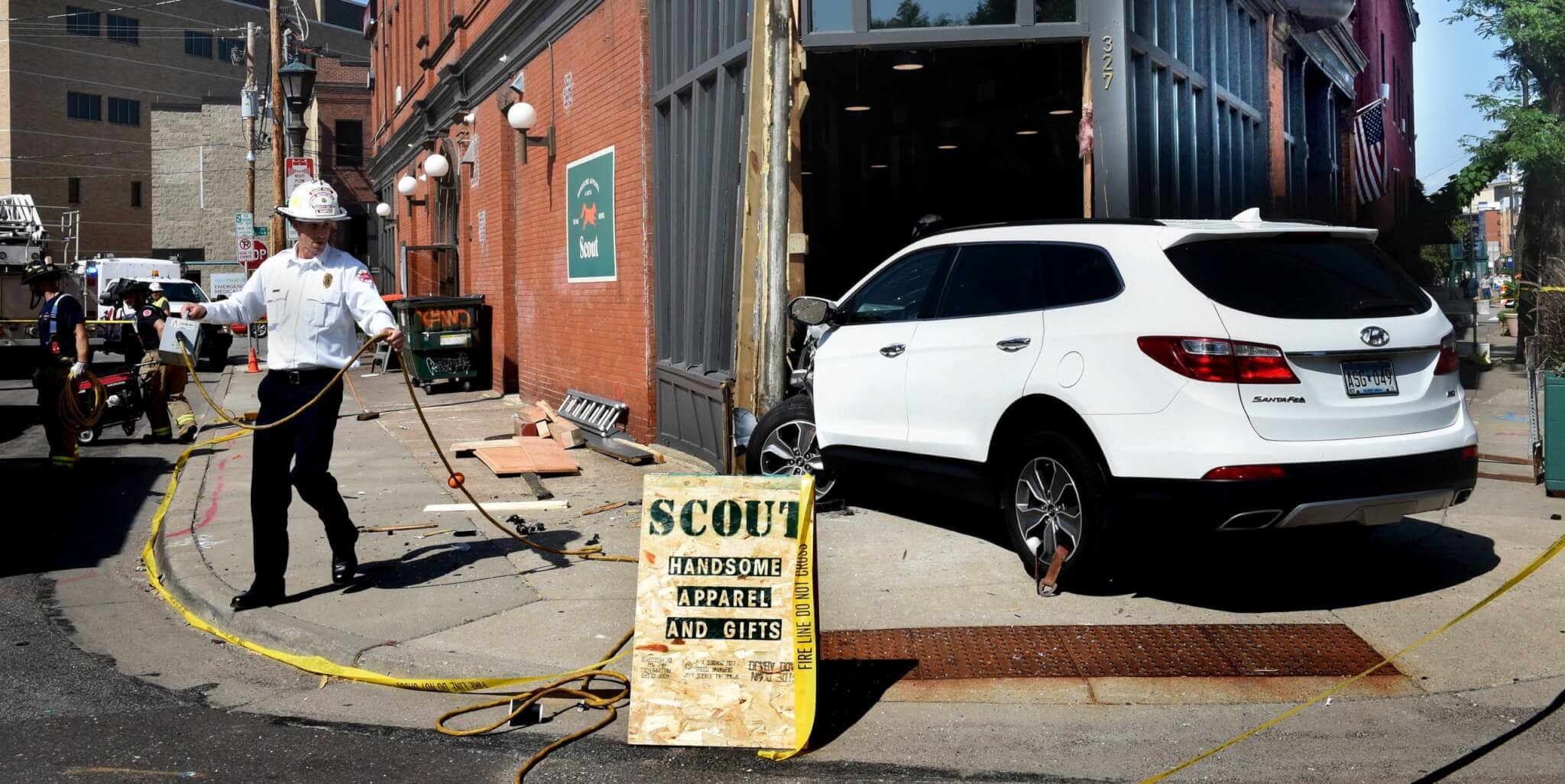According to the Storefront Safety Council, storefront crashes occur 60 times per day, totaling over 20,000 crashes per year. These crashes result in nearly 4,000 injuries, and tragically, more than 500 people are killed annually. These are shocking statistics which can be prevented by the simple installation of ASTM F3016 crash-tested bollards and safety barriers. This ASTM standard was developed to evaluate the impact performance of safety devices intended to protect people, area, and assets from low speed crashes.
These safety-tested bollards can not only save lives, but prevent millions of dollars being paid out on insurance claims for building damage, business interruptions, and pedestrian injuries and suffering. Once serious injury or death is involved, it doesn’t take much to push insurance liability claims into the millions of dollars per incident.
When you look around at various stores and buildings today, many are exposed. Often, there is nothing to prevent a vehicle from going over a busy sidewalk where many pedestrians are walking, and oftentimes crashing into a storefront and coming to a stop inside the building. What may look like barriers near parking spaces might actually be untested or poorly installed half measures. Studies and tragic events have shown that these are not effective methods.
The costs can be staggering for business and property owners who fail to protect employees, customers, and/or pedestrians. The cost of installing properly rated barriers is small when compared with the costs associated with not installing ASTM F3016 approved bollards. It’s estimated that the cost of property damage for a car-into-building crash (that doesn’t include an injury) is well over $10,000 per incident. Costly repairs, renovation, and loss of business can multiply the costs of such incidents.
For over 25+ years, Calspan has been crash testing bollards and barriers for the highway safety industry as well as high security anti-terrorism products to the ASTM F2656 standard, as well as a number of international standards. To address lower speed crash testing methods, Calspan has partnered with industry experts and ASTM to design and certify the most sophisticated ASTM F3016 crash testing cart to execute these tests for manufacturers and end users who want to certify the performance of products used to protect the public.
Rob Reiter, storefront crash expert, is the co-founder of the Storefront Safety Council and a member of the ASTM committee which proposed and wrote the F3016 test standard. Rob stated, “Calspan investing in the reusable test vehicle as well as the additional equipment and testing capabilities needed for accurate results will go a very long way to keeping us all safer. Manufacturers, architects, engineers and property owners will be able to evaluate products which have been validated with clear validation and test data from one of the premier engineering and test facilities in America.”
The ASTM F3016 test is performed with a surrogate cart, which weighs 5,000 lbs and which replicates the crash performance of a full-size pick-up truck or SUV. The test speeds range from 10 to 30mph, but the penetration rating is measured right at the location of impact, so that if part of the vehicle or even the bollard itself goes past a predetermined reference point, it affects the rating given for the penetration distance.
F3016 uses the same conventional “P-ratings” as other ASTM tests (F2656), with a P1 rating being much lower at 1 ft (0.3m) or less of penetration. The result is a much more true representation of how penetration is calculated, given that these type of storefront and pedestrian products are meant to be installed right in front of sidewalks and store entrances, with little standoff distance. These crash-tested bollards are meant for applications right at the point where vehicles might impact where we work, play, shop, or have a meal.
Certified bollards can help save lives, injuries, and property damage. Let’s make the world a safer place to live, work, and shop. Contact Calspan to run your next test, or click here to learn more about Calspan’s bollard/barrier testing capabilities.
